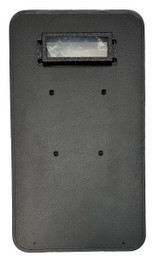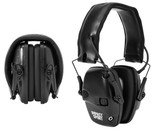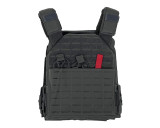Purchasing The Best Body Armor – Definitive Buyer’s Guide
If you are going to buy personal body armor – don’t rush into purchase without thoroughly studying all available materials on the topic first. You see, there are different types of body armor, and there are different ways of using the armor. You should also understand what are classes of armor and why there is no “the best” armor for all and every situation.
This buyer’s guide was written to debunk popular myths about body armor and should assist you in purchasing the most appropriate body armor set that will deliver the most adequate protection for your health and life and particular situations.
How to choose the best body armor
First of all, let us highlight the principal point – there is no universal “the best” armor. If you were thinking about a bulletproof vest that protects equally well against all the threats in the world and overcomes all other armors doing that – you were wrong.
In fact, the efficiency of the armor depends on a variety of factors. Of them, the most important is how you are going to use the body armor. Then, there are various armor types and protection levels – the NIJ rating standardizes protective capabilities of body armor against certain types of threats.
Normally, you should carefully consider all the factors and purchase not the best armor, but the best one for your specific goals. Below, we’ll take a closer look at each factor governing your choice of the protective clothing and body armor.
Possible uses of body armor
Depending on your type of armed activity, you should focus on different types of body armor (see below). This means that prior to purchasing body armor, you should define the scope of uses of body armor specific to you.
The most typical goals of purchasing armor for you could be the following:
- Protection at work. If you are a police officer, a law enforcement officer, a security guard, a bodyguard or an undercover investigator, body armor must be a part of your normal equipment.
- Protection during hunting or on shooting range. While these activities do not impose a direct threat of being shot, there is still a chance of being shot occasionally and ricochets. Well-fitting body armor does not hinder your performance, but provides an adequate level of protection to make you feel safe.
- Civilian safety and peace of mind. Shooting incidents are rare but very disturbing. Protective clothing or a bullet-resistant backpack can bring you back in a comfortable state of mind, where you don’t have to worry about your children in school or yourself in public places.
Some professional uses of body armor include:
- Police and law enforcement officers. Serving and protecting often requires facing various threats, including pistol and even rifle shots. Recommended body armor for such jobs are lightweight, often conceivable vests providing a decent level of protection while allowing a wearer to retain crucial maneuverability and comfort while wearing the armor all day long.
- Security guards. While these guys are rarely involved in direct gunfights with criminals, they still poses a serious risk. Wearing a protective vest can make the difference and protect you from a wild bullet when things unexpectedly go wrong.
- Corrections officers. Prisons are stuffed with criminals. Of course, not all of them are really dangerous, and they are unarmed. But history remembers many prison escapes that were often extremely violent. In such cases every bit of protection is valuable, especially against improvised blades and blunt impacts.
- Tactical operatives. Tactical operations or suppression of criminals imply a whole different level of risk. Hence, the need to use harder body armors. At the same time, tactical operations are fast-paced, so every ops must remain as mobile as possible, which puts some serious limitations to design and quality of the armor.
- Policemen and agents undercover. Remaining protected while looking as not, is one of key features of an undercover job. Concealed body armor allows officers and operatives to wear casual clothing while still protecting vital organs from shots.
- SWAT, commandos. Serious threats require serious response. SWAT body armor is more than just vests and protective clothing. There is also a lot of tactical gear and other equipment from shields to tactical backpacks.
Is purchasing and wearing body armor legal?
For now – yes. Civilians can freely buy body armor in specialized shops and online stores like BattleSteel.com as long as they haven’t been convicted of a felony. It is also illegal to purchase body armor online in Connecticut. Other than that, there are no other restrictions. (please check with you local government laws to verify all buying laws and restrictions)
Types of body armor
The level of protection provided by body armor depends on its type and security class.
Body armor types include:
- Protective clothing
- Ballistic vests
- Helmets
- Bullet-resistant backpacks
Typically, when someone says “body armor” he or she means vests most likely. This is what we always see in movies and TV shows.
The Institute sets standards on quality of protection against different types of bullets and other threats. NIJ-certified armor means this model of body armor was experimentally tested (that is – shot from a real gun), and the certificate confirms that this model can withstand a certain number of rounds from a certain firearm and ammo type.
Specifically, NIJ categorizes body armor as Soft Armor and Hard Armor, and develops several NIJ protection levels. Every such protection level (or class) is guaranteed to protect from certain threats.
Importantly, higher protection level does not necessarily mean better protection. It is really all about the type of ammo each armor class protects against. Specific NIJ protection levels are:
Soft armor
Soft armor is manufactured from fiber materials. Such armor is more lightweight, thinner and thus can be concealed.
NIJ levels:
- Type IIA. Offers limited protection against slow bullets and knives. Protects against 9mm FMJ RN; .40 Smith and Wesson (S&W) FMJ.
- Type II. Offers reliable protection against 9mm FMJ RN; .357Magnum JSP.
- Type IIIA. A nice balance of safety and weight. Can withstand shots of .357 SIGFMJ FN; .44 Magnum SJHP.
Advantages of soft body armor are: low weight, soft materials that allow for better wearing comfort, and decent protection from slow projectiles and shrapnel. The armor is also easily concealed.
Disadvantages come from the nature of this body armor: it cannot stop heavy shot or high-speed bullets.
Bulletproof clothing is also considered soft armor, although it may not have NIJ certification or are certified as one of lower classes. Bullet-resistant clothing includes jackets, vests, hoodies, pants, and shorts. The main advantage of such type of soft armor is obvious: they are very natural to wear and look exactly like your casual clothes. No one can tell you are wearing armor.
Hard armor
Hard armors are built from ceramic, steel and composite materials. Such armor can deal with shots from heavy rifles, shotguns and even sniper rifles. The price is weight and cumbersomeness.
NIJ levels:
- Type III. Protects against 7.62mm FMJ (M80) (Rifle).
- Type IV. Can stop rounds of .30 Cal AP (M2 AP) (Rifle)
The main advantage of hard armor is its really hard protection capability. Such armor is meant for heavy combat and gun fights.
Among disadvantages are: higher weight, non-flexibility. Hard armor does limit your mobility. Also, some hard armors are fragile and hence need special attention while wearing and maintaining.
How to take care of your body armor
Maintaining your armor is a key to its longer life, so make sure you take care of your vest of protective clothing after purchasing and during its entire lifetime (typically 5 years).
Here are few simple advices to keep your body armor well:
- Purchase body armor that fits well. Aside from better protection, this ensures longer functioning of the armor.
- Wash after use. Use a cloth to keep your armor clean. Make sure to remove toxic and corrosive liquids as quickly as possible to prevent damaging of the inner or outer lining.
- Store in a flat position, do not hang. Hanging the armor jeopardizes its lifespan.
- Store in a dry and cool place. Avoid direct heating or sunbeams. Avoid excessive moisture too.
FAQ
What body armor is made of?
Today’s body armors utilize a variety of materials starting from steel to ultra-technological composite materials. Some materials worth mentioning are:
- Steel
- Ceramic
- Titanium
- Kevlar
- Dyneema
- Graphene
- Polyethylene
What is the best body armor?
The best body armor is the one that saves your life and keeps you from injuries in a gunfire accident. There is no one definitive answer to this question. Some armors better withstand knife cuts and pierces, others can withstand several rounds but only from a low-velocity bullets, and some armors can save you even from a sniper shot, but become practically useless after that and are hard to wear all the time.
Overall, it depends. It depends on what you do, and what are your goals and purposes. Purchase the body armor that fits you best in all possible senses, and in return it will do its best to protect you.
What is the most affordable body armor?
Soft body armor is usually more affordable. NIJ IIA Type is probably the best protection for the price. However, the stock price for the armor also depends on the manufacturer.
Also, ballistic backpacks are cheaper than other type of armor starting from as low as $99.
How to choose the body armor size?
You should tape-measure yourself carefully and then follow the NIJ guides to determine your size of the vest.
The main body landmarks are:
- Chest/Bust girth level
- Torso girth level
- Chest width
- Back width
- Bust point to Bust point (female only)
- Bust point to side seam (female only)
- Under bust girth level (female only)
- Front and back center lengths
- Front lateral length
Here is a rule of thumb to quick-check yourself if the armor fits well. There must be a one-finger gap between the neckline of the vest and the suprasternal notch. And there must be a two-finger gap between the bottom line of the armor and the duty belt.
If you are not sure about the size you need, please consult our specialists before purchasing body armor.
Is there body armor for women?
Yes, and they are different from those designed for male wearers. Body armor designed for female wearers has a special anatomical cut and is generally more lightweight than the models for male wearers.
Is there body armor for kids?
There are bullet-resistant backpacks for kids, for example. However, vests and protective clothing are not available for children.
Can body armor expire?
Yes. Some materials body armor is made from gradually losing their qualities over time. So NIJ sets the standard lifespan of body armor to 5 years or more. Surely, expired body armor does not lose its protective capabilities the next day after the expiration date. But we are talking about your health and possibly life here. It is dangerous to wear body armor and bulletproof vests after the expiration date of 5 years or more . Do not do this. Seriously.
Conclusion
Purchasing body armor is not like driving to a mall for a new t-shirt. This is serious, your life and wellbeing may depend on it. Make sure to read this guide thoroughly as well as other materials in our blog. If you have any questions regarding armor tynpe, size, materials or selection – please don’t hesitate to contact us.
Recent Posts
-
Understanding Ballistic Shield Ratings and Their Applications
The Trusted Name in Tactical Defense - BattleSteel® When it comes to protecting those who protect us …2025-04-19 -
The Importance of Hearing Protection in Tactical Environments
The Legacy of BattleSteel® BattleSteel® is a trusted name in the world of tactical defense equipment …2025-04-14 -
How to Properly Fit and Wear a Plate Carrier
About BattleSteel and Their Mission BattleSteel is a trusted name in the tactical gear industry, ren …2025-04-11


